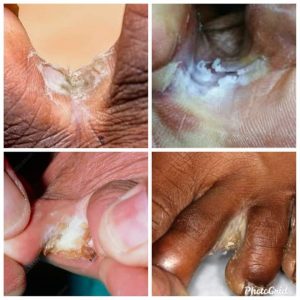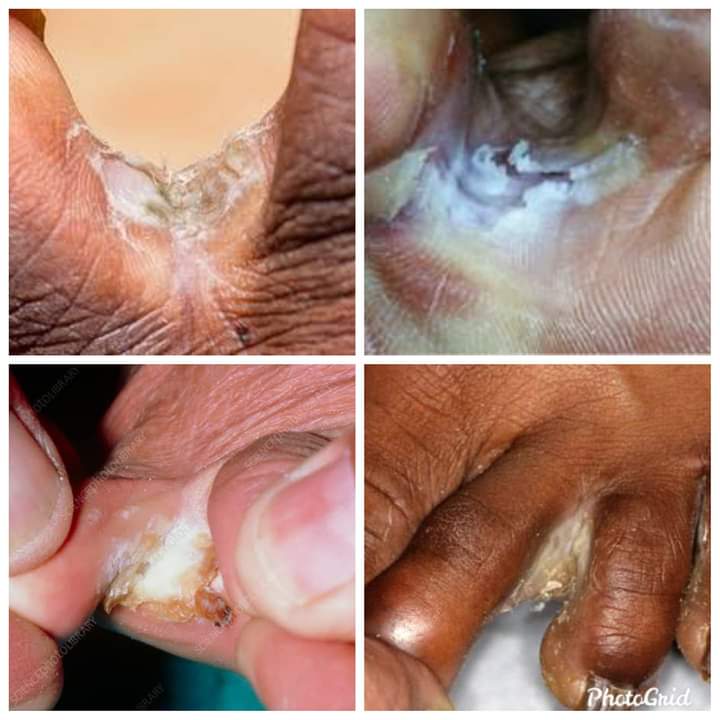What is the strongest treatment for athlete’s foot?
Athlete’s foot called tinea pedis is a highly contagious fungal infection caused by dermatophytes that thrive in warm, humid, and communal spaces such as gym changing rooms, community swimming pools, and public washrooms.

RISK FACTORS ASSOCIATED WITH ATHLETE’S FOOT
•You can easily contract this infection by walking barefoot on these breeding grounds.
Wearing damp socks, stockings or leggings, as well as tightfitting closed-toe shoes.
Wearing the same shoes and socks for extended periods of time.
Contact with surfaces that have been touched by a person with a fungal infection, such as rugs or mats, clothing, shoes, towels or bed linen.
Feet which are hot, wet or sweaty for long periods of time.
Minor nail or skin injuries on the feet can increase risk for infections.
Weakened or impaired immune systems, such as those with HIV-AIDS infections.
Pre-existing conditions such as diabetes or eczema may be more prone to fungal infections with increased risk of complications including things such as ulcers.
Pedicure environments – may be contaminated and can spread infection.
Most cases of athlete’s foot do not cause significant trouble, besides the usual skin discomforts like itching, stinging, scaling, and swelling. But without proper treatment and care, you can end up with severe complications and a high risk of transmission.
Athlete’s foot complications
The biggest complication associated with athlete’s foot relates to poor treatment or lack of treatment. Left on its own, fungi can spread to other parts of the body, including the hands, legs, toenails and fingernails, as well as other people.
Fungi does not typically spread too deeply within the body (i.e. it is not likely to affect the body’s internal organs or bloodstream). It does, however thrive in skin, nails and hair (keratin).
What is the strongest treatment for athlete’s foot?
Topical antifungal creams or ointments and sometimes oral antifungal tablets or capsules are enough to treat athlete’s foot. Loratadine tablets will help for the itching…Home remedies like been oil, garlic tree tea oil etc helps relieve the the symptoms of athlete’s foot and get rid of the disease. You may need antibiotics if the athlete’s foot is secondarily infected by bacteria.
Measures to Manage Athlete’s Foot
Here are a few things you can do at home to take care of your feet to get rid of athletes foot:
1. Keep your feet clean and dry
Keep your feet clean by washing them daily with antifungal soap and water. Then, air-dry them thoroughly before putting on socks or shoes.
Don’t miss the space between your toes and skin folds. Use a cotton or foam wedge to spread out your toes and ventilate the space between them. If you are in a hurry, you can use a clean foot towel to gently dab the skin dry.
You can also use dusting powder to readily absorb moisture. Be careful not to use too much as this can be irritating in between the toes.
2. Diabetics should be extra vigilant about foot problems
People with diabetes should take special care of their feet and go for regular podiatric checkups as they are especially prone to such foot infections.
3. Practice toenail hygiene
Clean and file your toenails regularly to prevent the occurrence of such infections.
4. Choose the right kind of footwear and socks
Avoid wearing ill-fitting shoes that squeeze your toes together, which leads to sweat buildup. Wear sandals, flip-flops, or other open footwear to avoid sweaty feet, especially during summer.
If you must wear shoes, opt for those that are light, airy, and made from natural materials with a wide and deep toe box that allows enough room for your toes to breathe. For trainers, choose the ones that have ventilation holes in them.
Avoid cotton and nylon socks, as they trap moisture close to the skin; acrylic is better.
5. Don’t scratch
No matter how intensely your foot itches, resist the urge to scratch it. Scratching the already damaged skin will further aggravate the condition and slow down recovery. Rinsing your feet with cool water is a better option to relieve the itch.
This article is the intellectual property of ©Ibrahim Issa with contributions from www.nimedhealth.com.ng
6. Use mild foot cleansers
If you suspect that your regular soap and shampoo are contributing to the skin irritation and damage caused by athlete’s foot, replace them with milder substitutes that are more skin-friendly.
7. Don’t give up on your foot hygiene as soon as the symptoms clear
The clearing of the athlete’s foot symptoms does not guarantee that the fungus has been eliminated.
Even though you may feel that you have fully recovered after several days or weeks of treatment, the fungus can still make a comeback when presented with an infection-conducive environment.
So, it is very important that you continue practicing the recommended foot hygiene regimen and shoe rotation for at least 2 weeks after the symptoms have disappeared.
Following these tips will go a long way to help you care for your feet and improve foot health.
All beneficial knowledge are welcomed here .
Do you have questions on athlete’s foot? We will be glad to answer you.
Have you been having it difficult to overcome this athlete’s foot for a longtime? tell us your experience and let’s see how we can be of help to you
©Ibrahim Issa with contributions from www.nimedhealth.com.ng





















